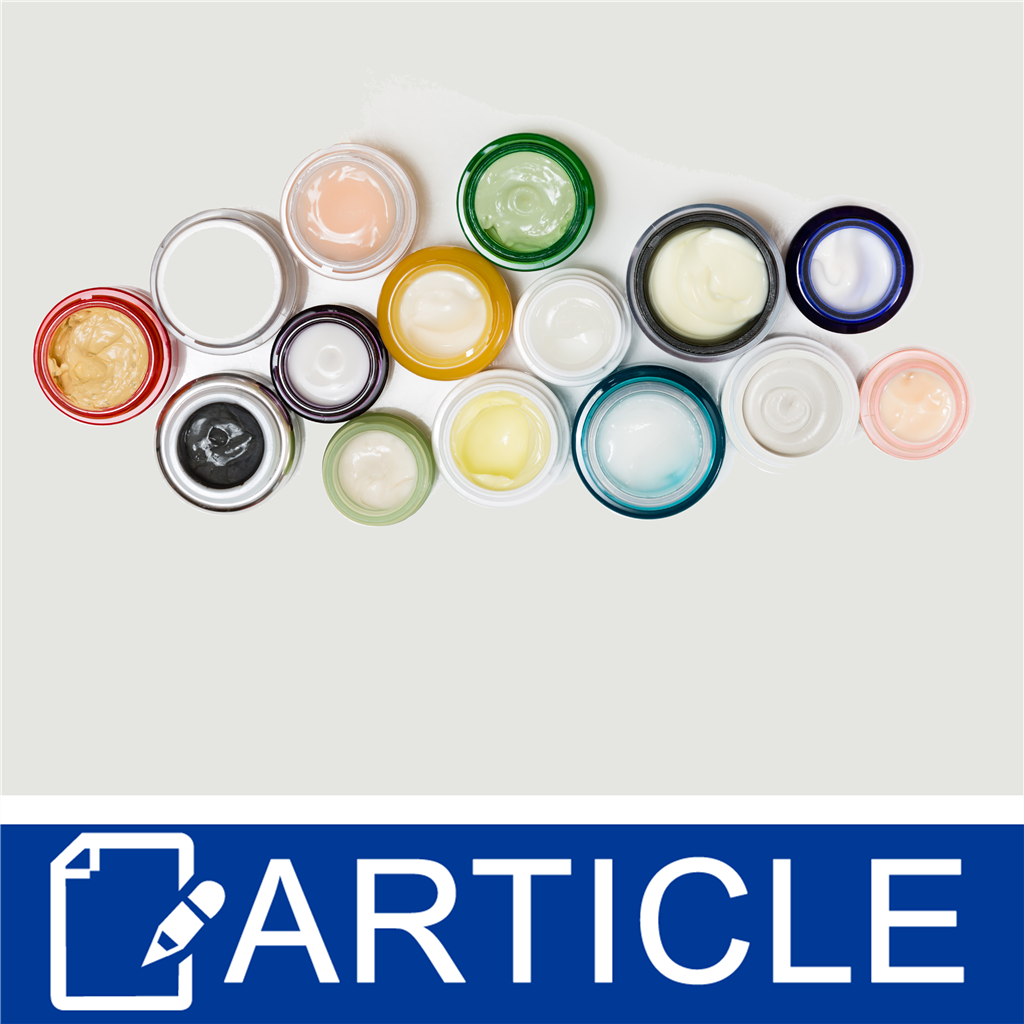Can you make emulsifiers at home with natural ingredients?
Understanding the Role of Emulsifiers in Food and Cosmetic Products
Emulsifiers are necessary ingredients in both food and cosmetic solutions. They offer to support blends that would otherwise divide, such as oil and water. Recognizing just how these compounds feature can illuminate their significance in daily items. The numerous kinds of emulsifiers each offer one-of-a-kind advantages, affecting structure and application. As customers come to be much more knowledgeable about active ingredient functions, the function of emulsifiers warrants better examination. What exists behind their performance and convenience?
What Are Emulsifiers?
Emulsifiers are substances that facilitate the mixing of 2 immiscible fluids, such as oil and water. These substances play a vital role in food and cosmetic items by maintaining solutions, which are mixtures that would otherwise divide. Emulsifiers have both hydrophilic (water-attracting) and hydrophobic (water-repelling) buildings, allowing them to lower surface tension between the 2 liquids. Typical examples of emulsifiers consist of lecithin, found in egg yolks and soy, and mono- and diglycerides stemmed from fats.
In food applications, emulsifiers improve structure and service life, allowing items like mayonnaise and salad dressings to maintain a constant appearance. In cosmetics, they assure that creams and creams remain consistent and effective. By allowing the combination of varied active ingredients, emulsifiers contribute substantially to the functionality and appeal of different items throughout several industries.
Just How Emulsifiers Work
When 2 immiscible fluids, such as oil and water, are combined, they have a tendency to divide unless an emulsifier is presented. Emulsifiers have unique molecular structures which contain both hydrophilic (water-attracting) and hydrophobic (water-repelling) elements. This twin nature enables them to communicate with both kinds of liquids, reducing surface tension at the user interface. As the emulsifier particles straighten themselves at the limit of the oil and water, they produce a barrier that stabilizes the mix.
Sorts of Emulsifiers
Various sorts of emulsifiers are used in the food and cosmetics sectors, each serving details functions based upon their chemical properties. Emulsifiers can be identified right into three major classifications: natural, synthetic, and semi-synthetic. Natural emulsifiers, such as lecithin and casein, are acquired from plant or pet resources and are typically preferred for their safety and compatibility with human consumption. Synthetic emulsifiers, like polysorbates and sorbitan esters, are chemically engineered for certain security and efficiency attributes, supplying versatility in formulation. Semi-synthetic emulsifiers, which include customized starches, combine all-natural and artificial aspects to boost functionality while maintaining some natural buildings. Furthermore, emulsifiers can be anionic, cationic, or nonionic, depending on their cost in solution, influencing their interaction with various other active ingredients. Understanding these kinds help formulators in choosing the ideal emulsifier for preferred appearance, rack, and stability life in both food and cosmetic applications.
Emulsifiers in Food Products

Types of Food Emulsifiers
Food emulsifiers play a vital function in supporting blends that would otherwise separate, such as oil and water. There are several kinds of food emulsifiers, each serving particular functions in different cooking applications. Lecithin, originated from eggs or soybeans, is an usual all-natural emulsifier discovered in items like mayo and delicious chocolate. Mono- and diglycerides, originated from fats, are extensively made use of in baked items and margarine for their emulsifying residential or commercial properties. Other emulsifiers, such as salt stearoyl lactylate and polysorbates, are synthetic and typically employed in refined foods. Each kind of emulsifier varies in its performance, stability, and compatibility with various active ingredients, making it important for food manufacturers to pick the suitable emulsifier for their specific solutions and preferred texture.
Features in Food Products
While lots of active ingredients add to the structure and stability of cooking items, emulsifiers are particularly important in achieving a smooth and consistent uniformity. They promote the blending of immiscible fluids, such as oil and water, stopping separation and improving product stability. Emulsifiers enhance mouthfeel and appearance, adding to the general sensory experience of food. In items like mayonnaise, salad dressings, and sauces, they aid keep the preferred viscosity and protect against splitting up throughout storage. Additionally, emulsifiers can expand life span by reducing the probability of putridity via oxidation. Their function is crucial in baked products, where they improve dough handling and structure. In general, the reliable use of emulsifiers substantially improves the quality and charm of numerous food products.
Health and Security Concerns
Emulsifiers play a considerable function in boosting the appearance and security of various food items, worries about their health and wellness effects have actually arised. Some research studies recommend that certain emulsifiers my company might interrupt intestine microbiota, possibly causing metabolic problems and swelling. As an example, polysorbate 80 and carrageenan have been looked at for their possible web links to digestive issues. Furthermore, the long-lasting results of eating emulsifiers continue to be greatly unidentified, motivating phone calls for more rigorous study. Governing firms often evaluate emulsifiers for security; however, customer awareness surrounding additives has actually enhanced, resulting in a demand for openness in food labeling. Because of this, many people are deciding for products devoid of artificial emulsifiers, stressing the requirement for balance in between food modern technology and wellness factors to consider
Emulsifiers in Cosmetic Products
Emulsifiers play a crucial function in aesthetic formulas by boosting texture and security. Their ability to blend oil and water stages not only enhances product efficiency but additionally offers different skin advantages. Comprehending the safety and security and regulatory landscape bordering these active ingredients is vital for both customers and producers.
Performance in Solutions
In the domain of cosmetic formulas, emulsifiers play an essential function in making certain stability and performance. They promote the mixing of oil and water stages, developing a homogeneous product that keeps its texture and appearance gradually. This functionality is crucial in creams, lotions, and lotions, where the wanted uniformity relies upon reliable emulsification. Additionally, emulsifiers contribute to the sensory attributes of products, improving spreadability and really feel on the skin. They also avoid splitting up, ensuring that active ingredients remain uniformly dispersed throughout the formulation. By supporting emulsions, these representatives expand life span and improve individual experience, making them crucial in the cosmetic market. Their varied structures allow formulators to tailor products to particular requirements and choices.
Skin Advantages Clarified
When taking into consideration the formula of aesthetic items, the inclusion of emulsifiers significantly enhances skin advantages. emulsifiers. These representatives help with the mixing of oil and water, developing stable emulsions that enhance item structure and application. Emulsifiers aid to deliver energetic ingredients better, guaranteeing that nourishing compounds penetrate the skin visit our website obstacle. This leads to improved hydration, as emulsifiers can create a safety layer that secures dampness. Furthermore, they often possess skin-conditioning residential properties, which can soften the skin and relieve. By stabilizing formulations, emulsifiers add to longer service life and constant performance, ultimately boosting the total individual experience. Their duty in cosmetics is necessary for accomplishing preferred aesthetic and useful outcomes
Safety and security and Laws
The unification of emulsifiers in aesthetic solutions not only improves product efficiency however likewise elevates vital considerations relating to safety and regulative conformity. Regulative bodies, such as the FDA and the EU's aesthetic regulations, impose rigorous guidelines to ensure the safety and security of emulsifiers used in cosmetics. These guidelines call for comprehensive safety and security analyses, focusing on possible skin irritability, toxicity, and allergenic properties. Manufacturers are accountable for making sure that emulsifiers are sourced from authorized listings and are utilized within secure concentrations. Openness in labeling is vital, allowing consumers to make enlightened choices. Continued research and monitoring of emulsifier security assurance that cosmetic products stay efficient while securing customer health and wellness. Conformity with these guidelines is crucial for preserving public rely on aesthetic items.

The Importance of Emulsifiers in Everyday Products
Lots of daily products count on emulsifiers to achieve their desired appearance and stability. These substances play a crucial role in both food and cosmetic sectors original site by making it possible for the blending of active ingredients that commonly do not integrate well, such as water and oil. In food like salad dressings, mayo, and sauces, emulsifiers guarantee a smooth and consistent consistency, boosting both flavor and look. In cosmetics, emulsifiers contribute to the security of creams and lotions, allowing for efficient application and absorption by the skin. emulsifiers.
Without emulsifiers, lots of items would certainly separate or come to be uninviting, bring about minimized customer complete satisfaction. The adaptability of emulsifiers also encompasses their ability to enhance service life, stopping wasting and keeping high quality. As a result, their value can not be overemphasized, as they are necessary in developing items that meet the assumptions of consumers concerning performance and experience.
Regularly Asked Inquiries
Are Emulsifiers Safe for Usage and Skin Application?

Emulsifiers are generally taken into consideration risk-free for consumption and skin application, as governing bodies approve much of them. However, individual sensitivities may vary, necessitating care for those with details allergic reactions or skin problems.
Can Emulsifiers Reason Sensitive Reactions in Some Individuals?
Yes, emulsifiers can cause allergies in some individuals. Reactions might differ from light skin irritations to a lot more extreme feedbacks, depending upon specific sensitivities and the details emulsifier utilized in items they consume or use.
How Do Emulsifiers Influence the Life Span of Products?
Emulsifiers boost product security by preventing separation and expanding shelf life. They produce a consistent mixture, minimizing the likelihood of putridity and keeping texture, flavor, and look with time in different solutions.
Exist Natural Alternatives to Artificial Emulsifiers?
Yes, there are natural options to synthetic emulsifiers, such as lecithin from soy or egg yolks, gum tissue arabic, and numerous plant-based oils. These choices provide efficient emulsification while attracting customers looking for cleaner ingredient options.
What Laws Control the Usage of Emulsifiers in Products?
Regulations governing emulsifiers include food safety and security criteria set by organizations like the FDA and EFSA, which analyze labeling, usage, and safety limitations. Cosmetic products comply with comparable guidelines under companies making certain customer safety and security and product efficacy.
In food applications, emulsifiers boost appearance and rack life, enabling items like mayonnaise and salad dressings to maintain a regular appearance. Emulsifiers play an essential function in food items, offering numerous functions that boost appearance and security. Emulsifiers play a considerable function in boosting the appearance and stability of various food products, worries concerning their wellness implications have emerged. The incorporation of emulsifiers in aesthetic formulas not only improves item efficiency yet also raises important considerations regarding security and regulative compliance. In food items like salad dressings, mayo, and sauces, emulsifiers assure a consistent and smooth uniformity, enhancing both flavor and appearance.